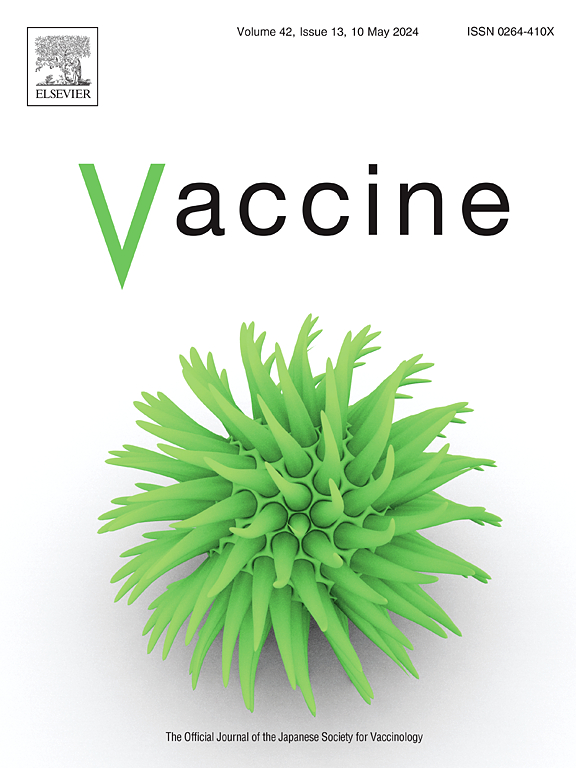The natural history of infection with Sudan virus compared to Ebola virus in non-human primates: a rapid review
IF 4.5
3区 医学
Q2 IMMUNOLOGY
引用次数: 0
Abstract
Uganda recently declared the end of its sixth Sudan virus (SUDV) outbreak; the prior outbreak having ended just two years earlier. Efficacious vaccines are licensed for protection against Ebola virus (EBOV), but there is no evidence that these afford clinical protection against other orthoebolaviruses. While EBOV has been extensively characterized in humans and animal models, the evidence base for SUDV is more limited due to the lower frequency of outbreaks and cases to date. It is therefore valuable to consider how, and to what extent, our knowledge and evidence base on EBOV can be leveraged to support the development of countermeasures against SUDV. This rapid review aims to examine and compare the existing evidence on the natural history of EBOV and SUDV in non-human primates (NHP). Overall, 24 studies (described in 25 articles) were identified for inclusion: 19 evaluated EBOV, four evaluated SUDV, and one evaluated both. Results confirm that EBOV and SUDV infection result in very similar disease in NHP, characterized by a severe systemic inflammatory response and disseminated intravascular coagulopathy, leading to tissue and organ damage and fluid loss. Clinical presentation and progression, clinical pathology observations, and characteristics of the host immune response were consistent across viruses. There is some indication that EBOV may result in slightly faster disease progression and marginally higher mortality than SUDV, though there is substantial overlap, and minor differences are also observed with different EBOV variants. While infection of rhesus and cynomolgus macaques with SUDV or EBOV are widely accepted models of human disease, an equivalent comparison of available human data would be valuable.
非人类灵长类动物中苏丹病毒与埃博拉病毒感染的自然历史比较:快速回顾
乌干达最近宣布第六次苏丹病毒(SUDV)疫情结束;上一次疫情在两年前刚刚结束。有效的埃博拉病毒(EBOV)保护疫苗已获得许可,但没有证据表明这些疫苗可提供针对其他正埃博拉病毒的临床保护。虽然埃博拉病毒已在人类和动物模型中得到广泛表征,但由于迄今为止疫情和病例的频率较低,SUDV的证据基础更为有限。因此,考虑如何以及在多大程度上利用我们关于埃博拉病毒的知识和证据基础来支持制定针对埃博拉病毒的对策是有价值的。本快速综述旨在检查和比较关于EBOV和SUDV在非人灵长类动物(NHP)中自然历史的现有证据。总共有24项研究(在25篇文章中描述)被纳入:19项评估EBOV, 4项评估SUDV, 1项评估两者。结果证实,EBOV和SUDV感染在NHP中导致非常相似的疾病,其特征是严重的全身炎症反应和弥散性血管内凝血功能障碍,导致组织和器官损伤和液体流失。不同病毒的临床表现和进展、临床病理观察和宿主免疫反应特征是一致的。有一些迹象表明,EBOV可能导致比SUDV略快的疾病进展和略高的死亡率,尽管存在大量重叠,并且在不同的EBOV变体中也观察到微小的差异。虽然恒河猴和食蟹猴感染SUDV或EBOV是被广泛接受的人类疾病模型,但对现有人类数据进行等效比较将是有价值的。
本文章由计算机程序翻译,如有差异,请以英文原文为准。
求助全文
约1分钟内获得全文
求助全文
来源期刊

Vaccine
医学-免疫学
CiteScore
8.70
自引率
5.50%
发文量
992
审稿时长
131 days
期刊介绍:
Vaccine is unique in publishing the highest quality science across all disciplines relevant to the field of vaccinology - all original article submissions across basic and clinical research, vaccine manufacturing, history, public policy, behavioral science and ethics, social sciences, safety, and many other related areas are welcomed. The submission categories as given in the Guide for Authors indicate where we receive the most papers. Papers outside these major areas are also welcome and authors are encouraged to contact us with specific questions.
 求助内容:
求助内容: 应助结果提醒方式:
应助结果提醒方式:


